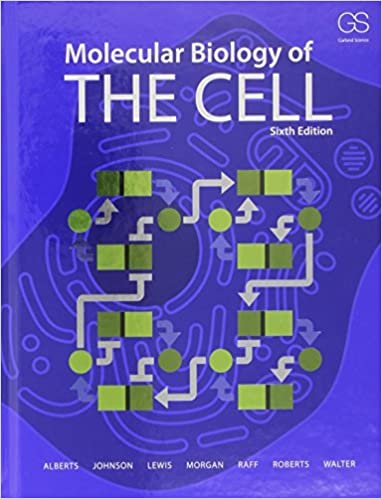
Molecular Biology Of The Cell 6th Edition by Bruce Alberts, Alexander Johnson, Julian Lewis, David Morgan, Martin Raff, Keith Roberts, Peter Walter
Edition 6ISBN: 978-0815345244
Molecular Biology Of The Cell 6th Edition by Bruce Alberts, Alexander Johnson, Julian Lewis, David Morgan, Martin Raff, Keith Roberts, Peter Walter
Edition 6ISBN: 978-0815345244 Exercise 8
Rous sarcoma virus (RSV) carries an oncogene called Src, which encodes a continuously active protein tyrosine kinase that leads to unchecked cell proliferation. Normally, Src carries an attached fatty acid (myristoylate) group that allows it to bind to the cytoplasmic side of the plasma membrane. A mutant version of Src that does not allow attachment of myristoylate does not bind to the membrane. Infection of cells with RSV encoding either the normal or the mutant form of Src leads to the same high level of protein tyrosine kinase activity, but the mutant Src does not cause cell proliferation. a. Assuming that the normal Src is all bound to the plasma membrane and that the mutant Src is distributed throughout the cytoplasm, calculate their relative concen- trations in the neighborhood of the plasma membrane. For the purposes of this calculation, assume that the cell is a sphere with a radius (r) of 10  and that the mutant Src is distributed throughout the cell, whereas the normal Src is confined to a 4-nm-thick layer immediately beneath the membrane. [For this problem, assume that the membrane has no thickness. The volume of a sphere is
and that the mutant Src is distributed throughout the cell, whereas the normal Src is confined to a 4-nm-thick layer immediately beneath the membrane. [For this problem, assume that the membrane has no thickness. The volume of a sphere is  b. The target (X) for phosphorylation by Src resides in the membrane. Explain why the mutant Src does not cause cell proliferation.
b. The target (X) for phosphorylation by Src resides in the membrane. Explain why the mutant Src does not cause cell proliferation.
 and that the mutant Src is distributed throughout the cell, whereas the normal Src is confined to a 4-nm-thick layer immediately beneath the membrane. [For this problem, assume that the membrane has no thickness. The volume of a sphere is
and that the mutant Src is distributed throughout the cell, whereas the normal Src is confined to a 4-nm-thick layer immediately beneath the membrane. [For this problem, assume that the membrane has no thickness. The volume of a sphere is  b. The target (X) for phosphorylation by Src resides in the membrane. Explain why the mutant Src does not cause cell proliferation.
b. The target (X) for phosphorylation by Src resides in the membrane. Explain why the mutant Src does not cause cell proliferation.Explanation
When an antibody binds to a second prote...
Molecular Biology Of The Cell 6th Edition by Bruce Alberts, Alexander Johnson, Julian Lewis, David Morgan, Martin Raff, Keith Roberts, Peter Walter
Why don’t you like this exercise?
Other Minimum 8 character and maximum 255 character
Character 255


